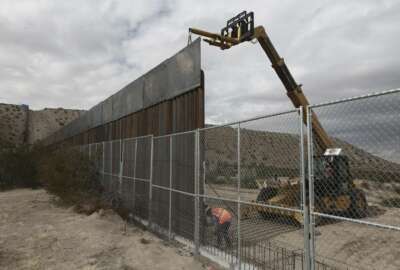
What will it take to hire 15,000 new border and immigration agents?
President Donald Trump is calling on Homeland Security Department leadership to hire at least 5,000 new border patrol agents and 10,000 additional Immigration and...
Recent implementation memos from Homeland Security Secretary John Kelly charge human capital leadership at Customs and Border Protection and Immigration and Customs Enforcement to hire 15,000 new federal employees.
Yet with no additional, immediate funding to implement President Donald Trump’s new executive orders on immigration and border security, offering the proper incentives to attract and hire talented border patrol agents and immigration officers — already a challenging and lengthy process — will be no easy task.
It’ll be a joint effort for leadership at both agencies, along with DHS’ chief human capital officer, chief financial officer and undersecretary for management, to develop plans to hire 5,000 additional border patrol agents and 500 Air and Marine agents/officers.
These plans should “balance growth and interagency attrition by integrating workforce shaping and career paths for incumbents and new hires,” one memo said.
Kelly is also directing ICE leadership to hire 10,000 agents and officers, in addition to “operational and mission support and legal staff necessary to hire and support their activities,” the second memo said.
DHS leaders have previously said the average time-to-hire at the department is 125 days, while the governmentwide average in recent years was about 100 days.
CBP has struggled in the past to quickly hire border patrol agents. After condensing its 12-step hiring process into more measurable segments, the agency’s time-to-hire went from more than 400 days to about 170 days, now acting CBP Commissioner Kevin McAleenan said in December.
The agency is already about 1,600 agents below the congressional staffing floor of 21,370, said Shawn Moran, the vice president of the National Border Patrol Council.
“It’s going to take some effort,” Moran said of the administration’s hiring surge. “I don’t think it’s going to happen to overnight. It’s going to be a multi-year process if we’re going to get to just over 26,000 agents.”
The National Border Patrol Council sees CBP’s polygraph requirement as an impediment to attracting and hiring talented candidates.
“The polygraph process is an over-reaction to some of the corruption that’s happened throughout CBP,” he said. “We’re going to encourage the new commissioner to take a look at that program, because it’s failing in excess of 50 percent of the people applying.”
Turnover at the Border Patrol has been high, as agents leave for other law enforcement jobs and others retire, Moran said.
“We’re coming up on the 20-year mark from when we started the Operation Hold the Line and Operation Gatekeeper hiring pushes of the mid to late ’90s, so a lot of those people hired then are becoming eligible for retirement.”
Christian Beckner, deputy director for George Washington University’s Center for Cyber and Homeland Security, said DHS could look to individuals just coming out of the military or from other law enforcement offices and agencies to attract new agents to CBP and ICE.
CBP’s last hiring push came in 2004 and 2005, and Moran said the council urged the Trump administration not to repeat mistakes that happened more than 10 years ago.
“We’ve said in the past that you can’t cut corners on the training,” he said. “You can’t shorten the academy in hopes of pushing more people through.”
In the past, border patrol agents attended a 21-week training academy in Artesia, New Mexico. Now, Spanish-speaking agents attend a 12-13-week program and non-Spanish-speaking agents go through a 16-week session.
Finding competent candidates can also be difficult to find.
Meeting suitability standards has been a tough hurdle for some border patrol agents in the past, as CBP and ICE typically have typically had “onerous” requirements, Beckner said.
To that end, he said funding for the Office of Professional Responsibility and DHS Office of the Inspector General should be commensurate with the personnel increases at CBP and ICE.
“We want to make sure that we go after people who have the right mindset,” Moran said. “This is a job where you need to be able to think for yourself. You’re often going to be working alone in remote areas. Your backup may not be close by.”
Retention has been another challenge for the agency, since many border patrol agents are hesitant to relocate or stay in remote areas along the southern border. In those situations, offering the right incentives is key, Moran said.
Copyright © 2025 Federal News Network. All rights reserved. This website is not intended for users located within the European Economic Area.
Nicole Ogrysko is a reporter for Federal News Network focusing on the federal workforce and federal pay and benefits.
Follow @nogryskoWFED
Related Stories





